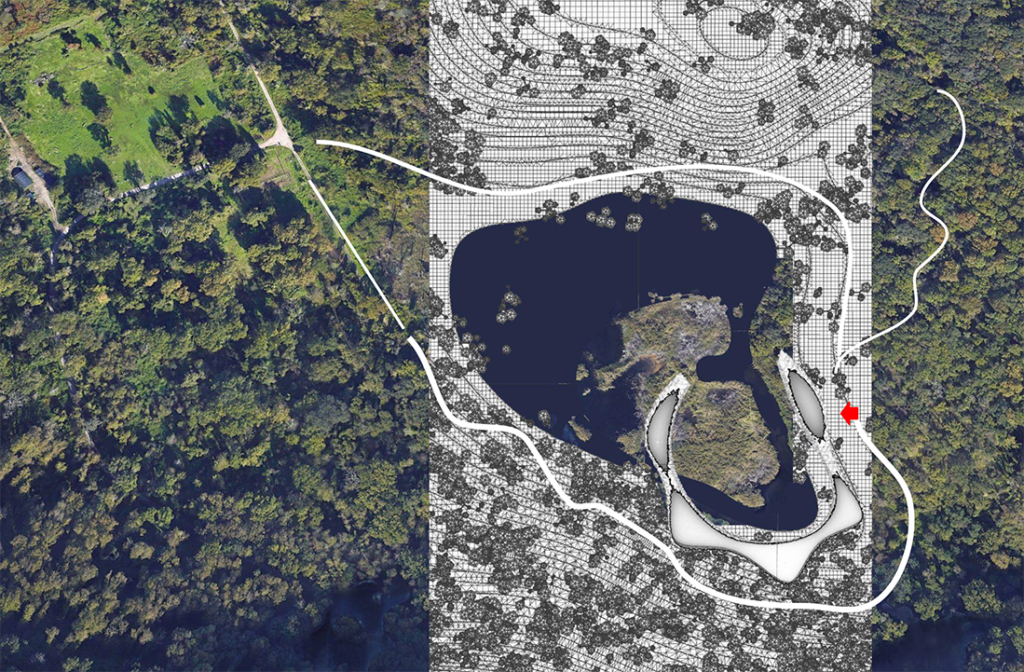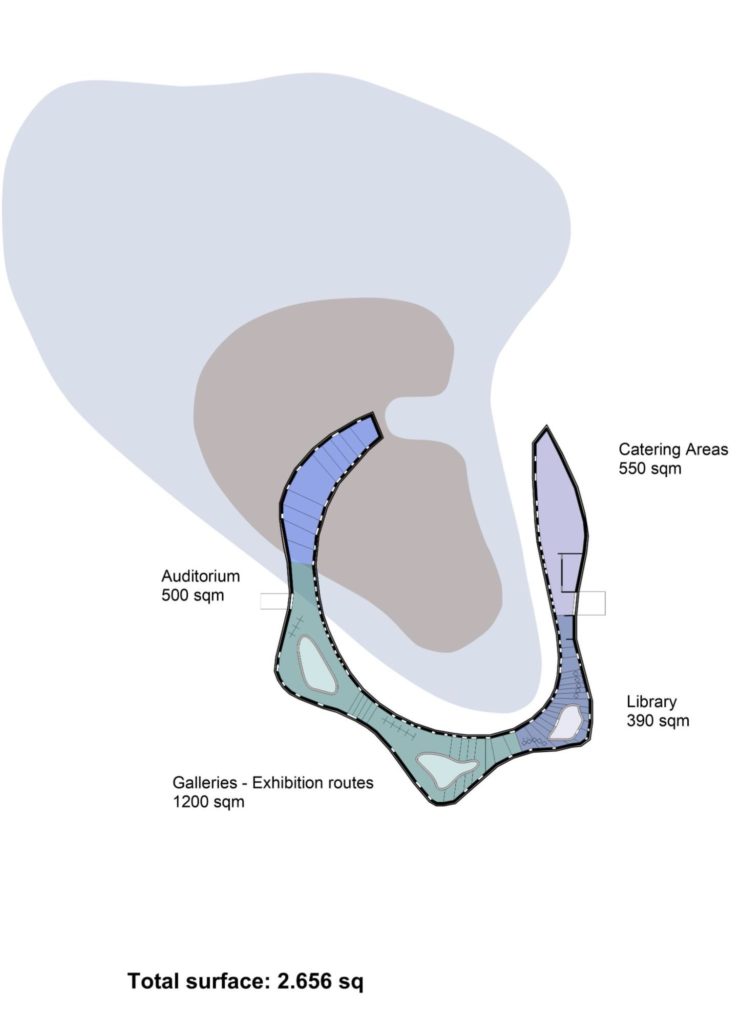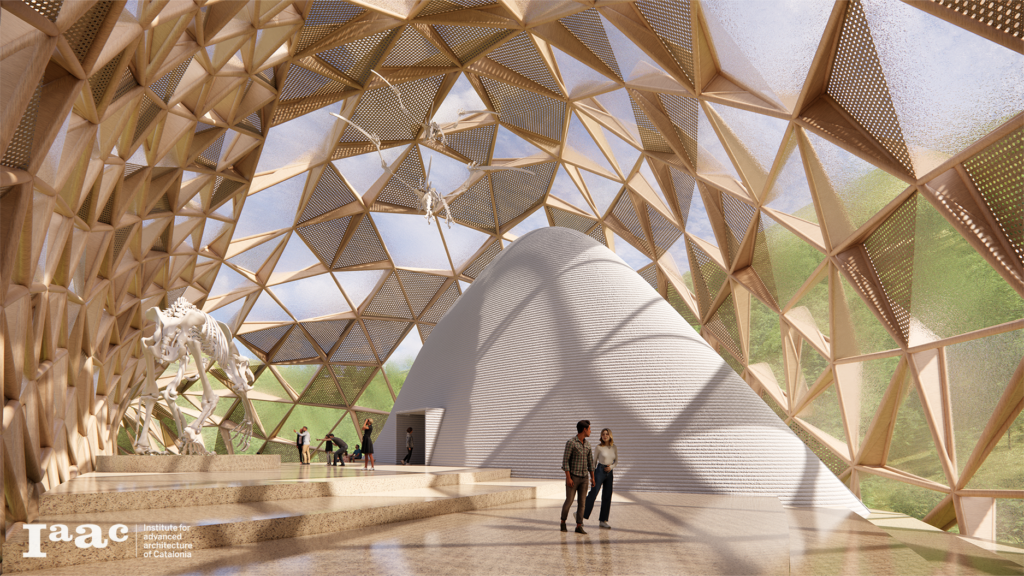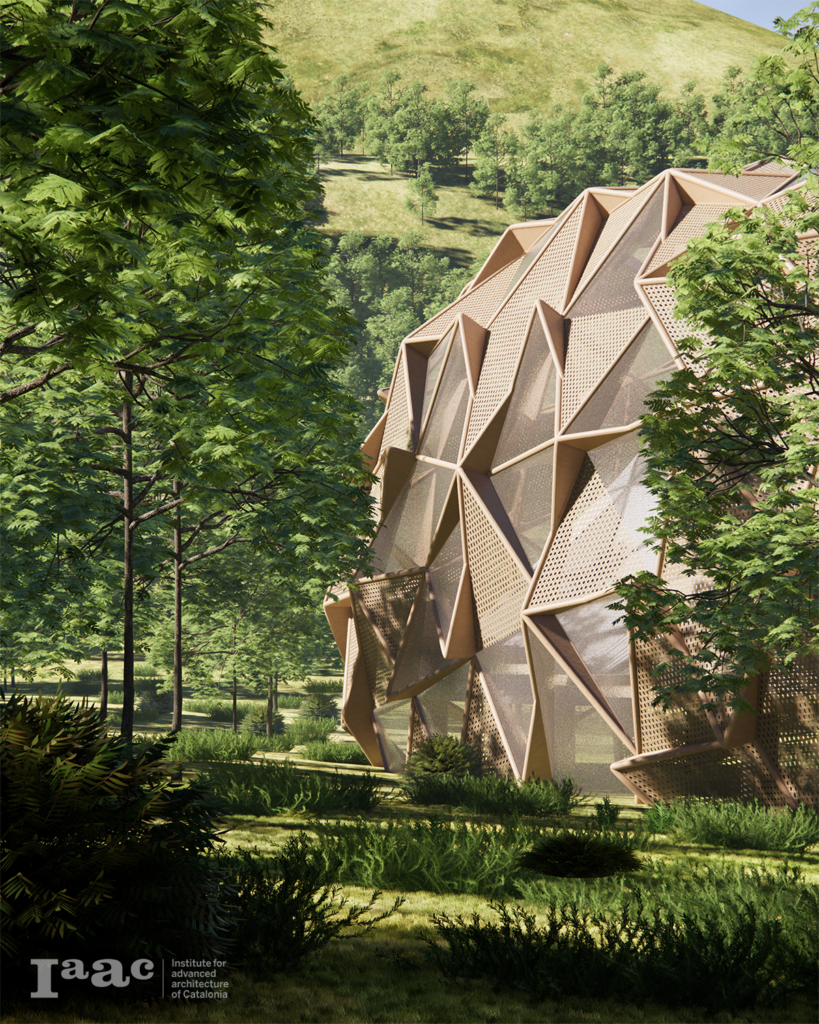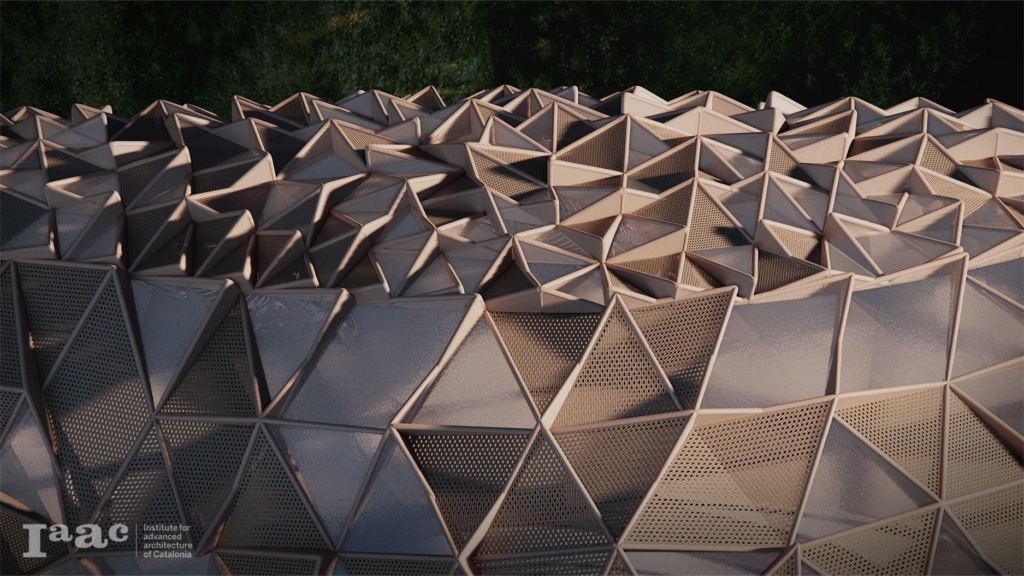An (a)live museum as a stage of the wildlife-scene
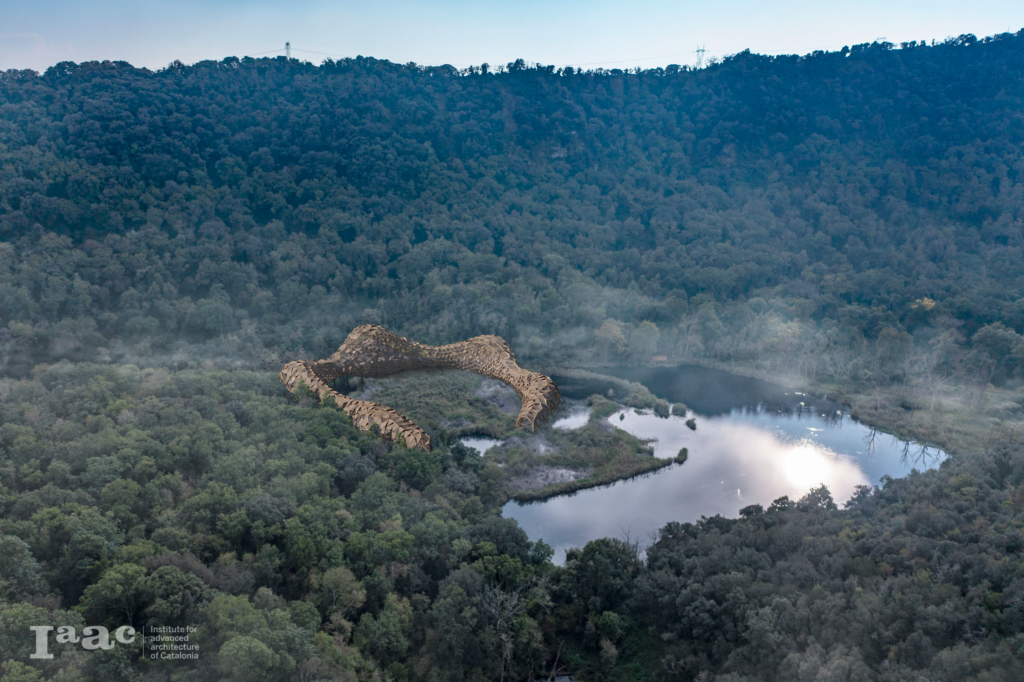
Design Concept – 3D Tiling
Human exploit their home planet leaving less space for fauna and flora. Into the wild, a museum dedicated to the marvels of wilderness is both a shelter and a platform of experience. Volcanic fertile ground gives birth to a fluid body. Crocodile armor or octopus suction capes become the skin. Soil, trees, and sweet, water embrace the form. It tries to adapt. Biomorphic analogies – nature is our technology. The path across the lake is partly enclosed by the mesh surface. Tri-quatri mesh, 3d tiling experiments took place in the early stages of design. The museum concept is a path along part of the lake.

Computational Design Methodology
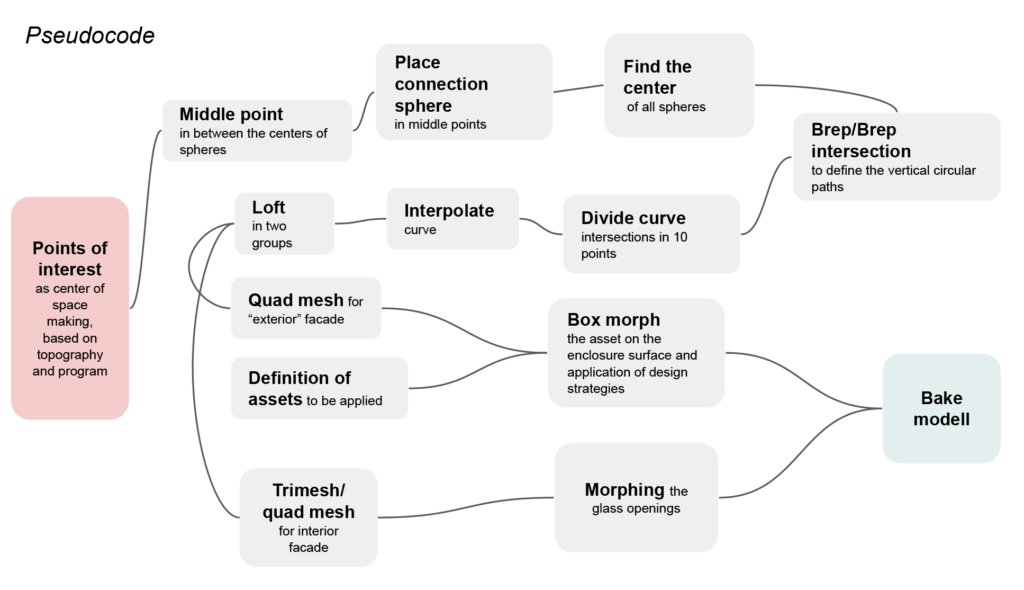

Translating the concept to a computational process, the path is defined by connecting the points of interest. Then Spheres of different sizes represent the main functions of the program. Generous volume or narrowing down the path forms the outer skin of the structure. Box morphing the quadri- or tri-mesh results in a 3d tiling pattern applied across the museum’s surface.
Input:
- Points of interest
Process:
- Base and volume definition
- Attribute definition as a repetitive
- 3d pattern,
- openings placement
Output:
- Model of floor slab(s) and enclose
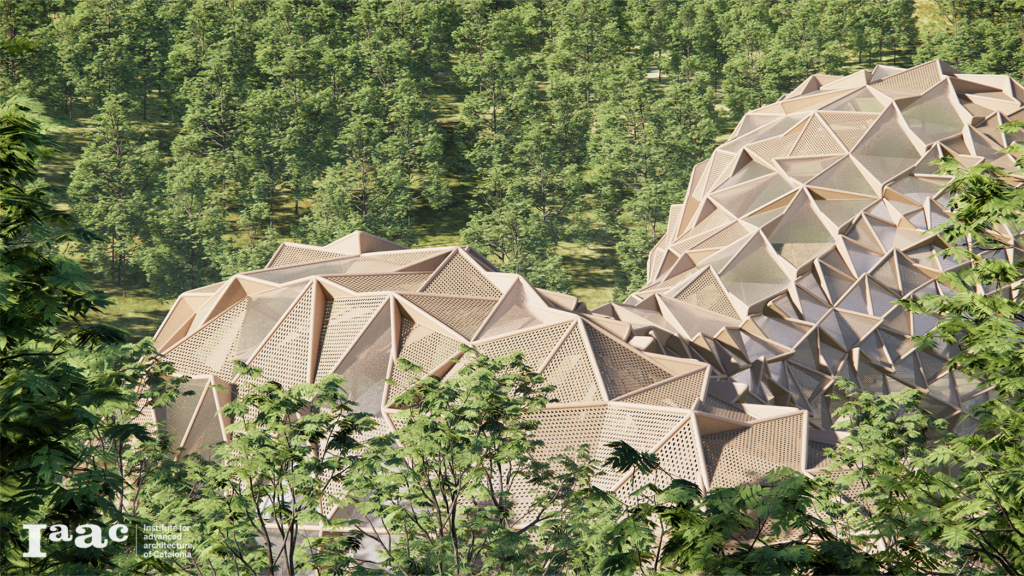
Form Finding Process
Following this form-finding process, the structure is generated by the mesh edges. Auditoriums and larger exhibition spaces are placed in the large cavities. The Path is slopped to reflect the adventurous character of wildlife. The outer skin is manipulated, as “lifted triangular faces”, sometimes opaque, others transparent.




Early Explorations
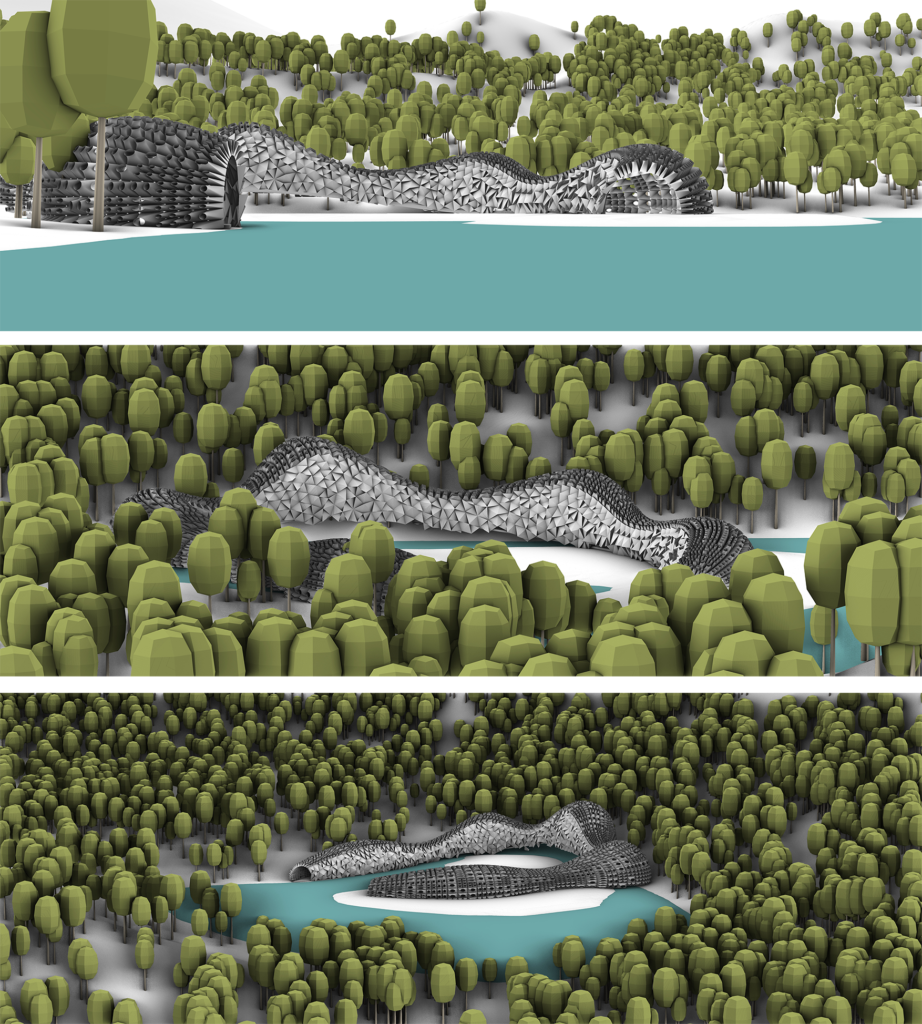
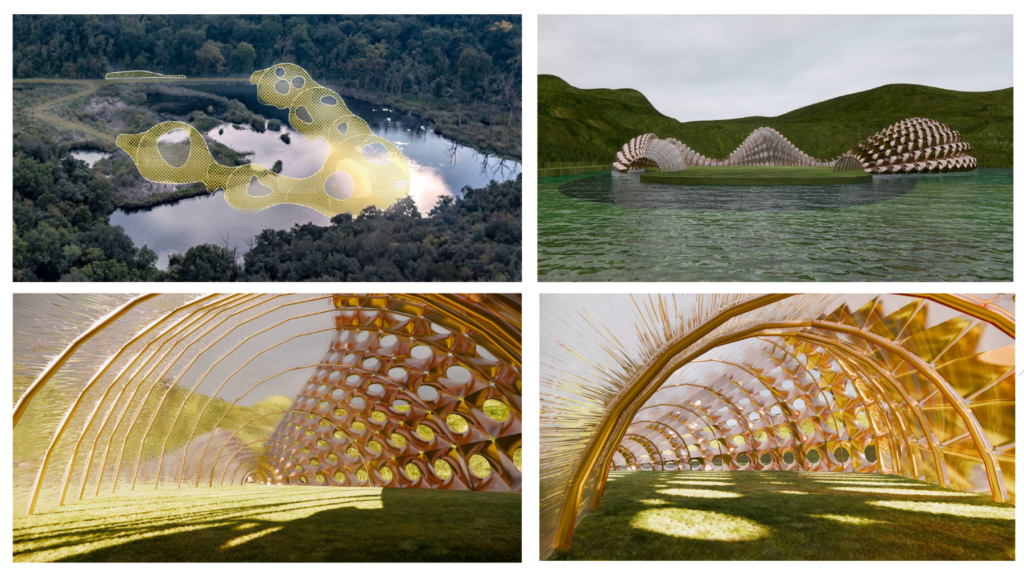
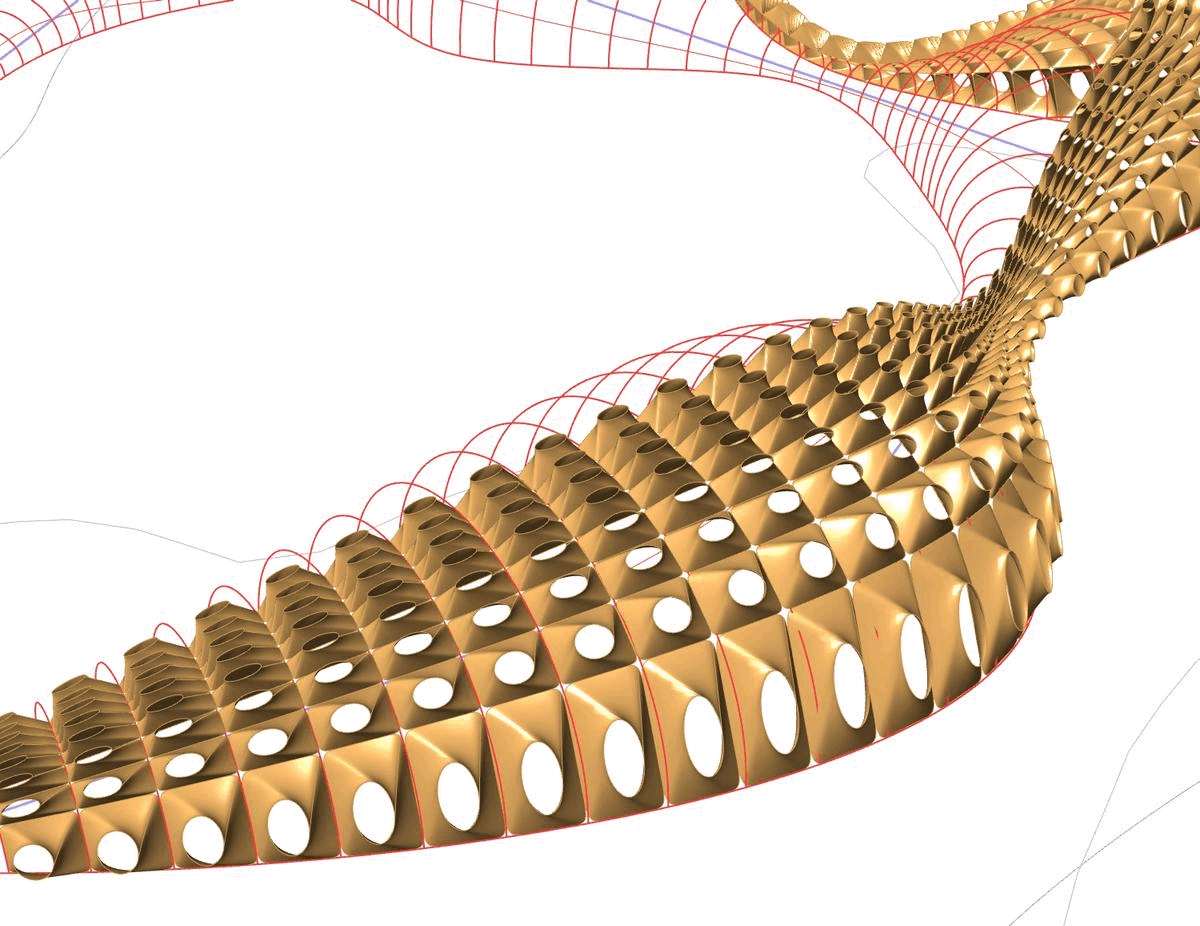
Form Iterations
Variations in footprint, by manipulating the location of points of interest result in a wide variety of shapes. Iterations in Z direction allow the path to be sculpted with playfulness. Explorations in Quadri vs tri mesh result in different 3d tiling patterns. The Solar path analysis allows us to choose the faces that bring the most light in the building, to avoid a lot of glass.
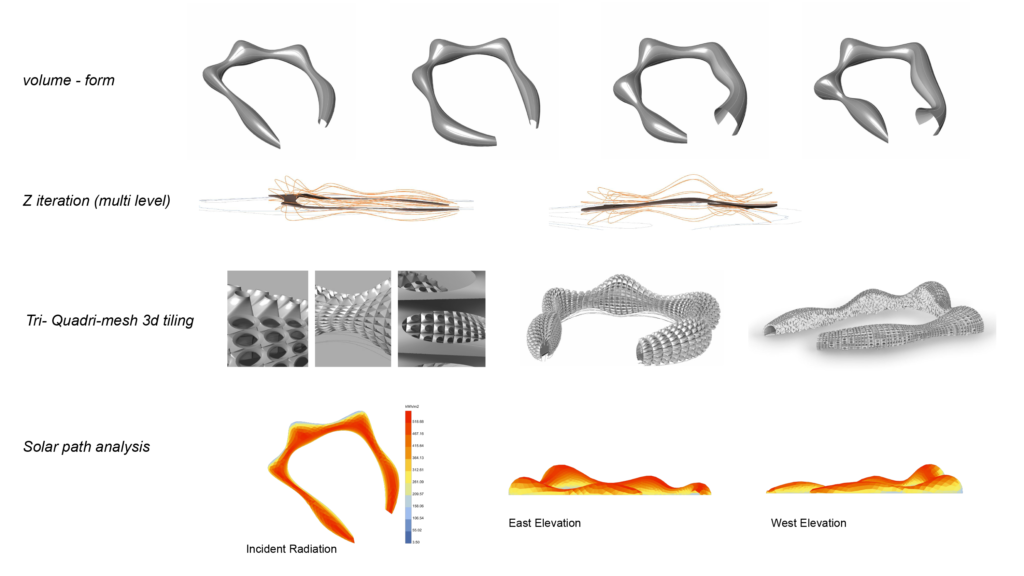
Architecture
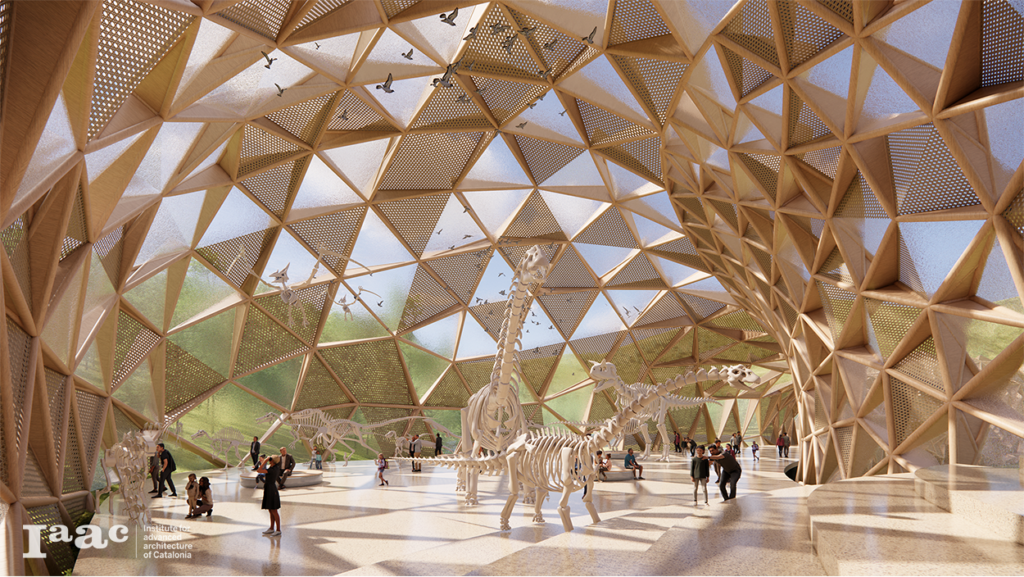
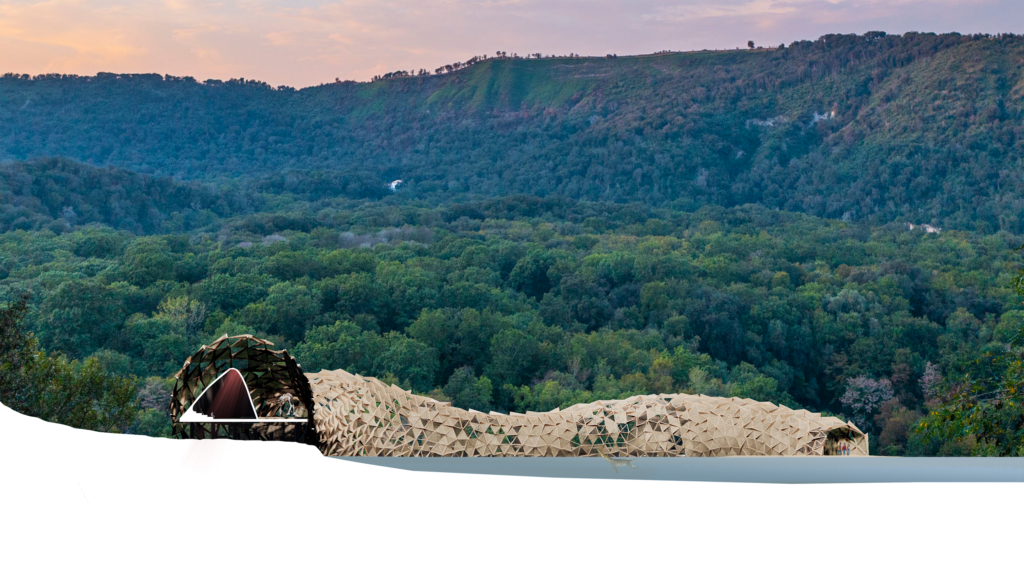
Layout Organisation
